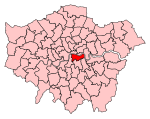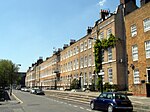Lord Nelson, Bermondsey
BermondseyGrade II listed buildings in the London Borough of SouthwarkGrade II listed pubs in LondonLondon building and structure stubsNational Inventory Pubs ... and 4 more
Pub stubsPubs in the London Borough of SouthwarkUnited Kingdom listed building stubsUse British English from June 2014

The Lord Nelson is a Grade II listed public house at 386 Old Kent Road, Bermondsey, London.It is on the Campaign for Real Ale's National Inventory of Historic Pub Interiors.It was built in the early 19th century.
Excerpt from the Wikipedia article Lord Nelson, Bermondsey (License: CC BY-SA 3.0, Authors, Images).Lord Nelson, Bermondsey
Old Kent Road, London Old Kent Road (London Borough of Southwark)
Geographical coordinates (GPS) Address Phone number External links Nearby Places Show on map
Geographical coordinates (GPS)
| Latitude | Longitude |
|---|---|
| N 51.486739 ° | E -0.07423986 ° |
Address
The Lord Nelson
Old Kent Road 386
SE1 5AA London, Old Kent Road (London Borough of Southwark)
England, United Kingdom
Open on Google Maps







